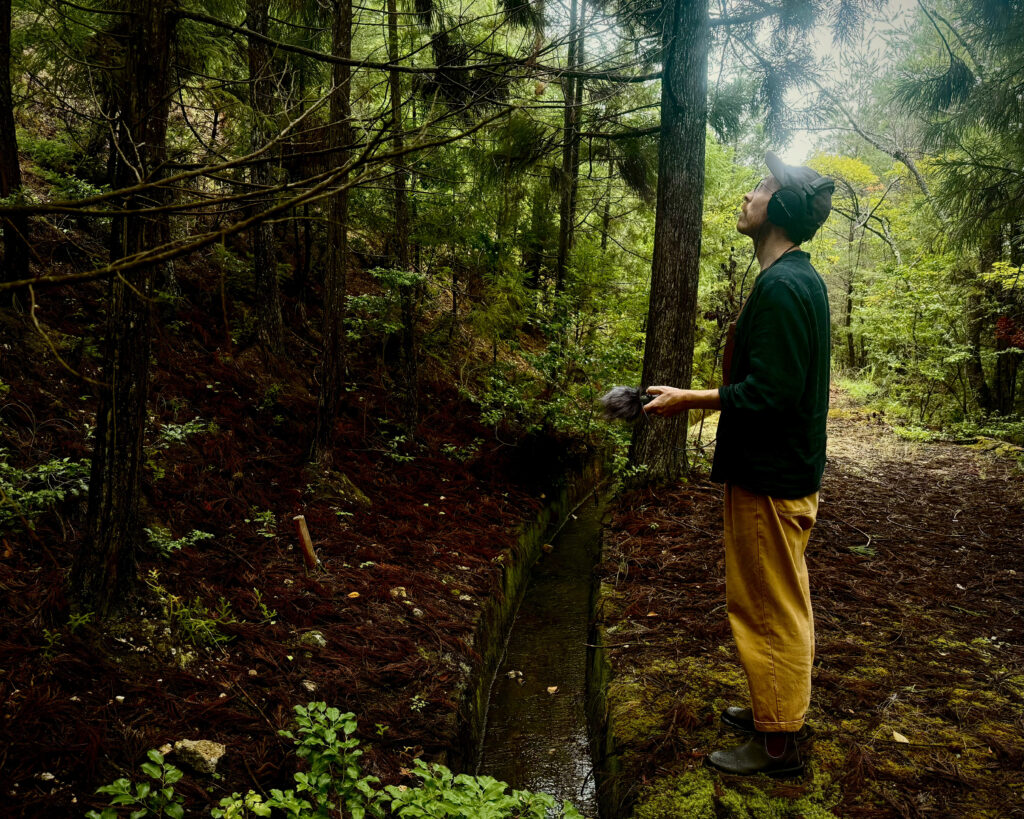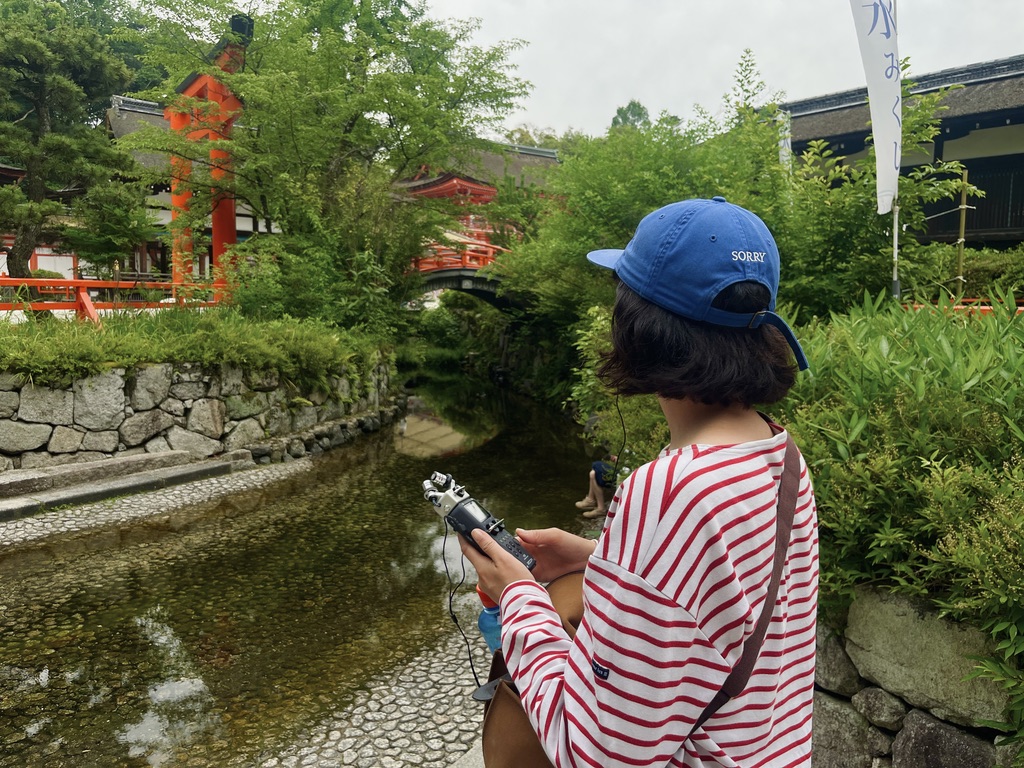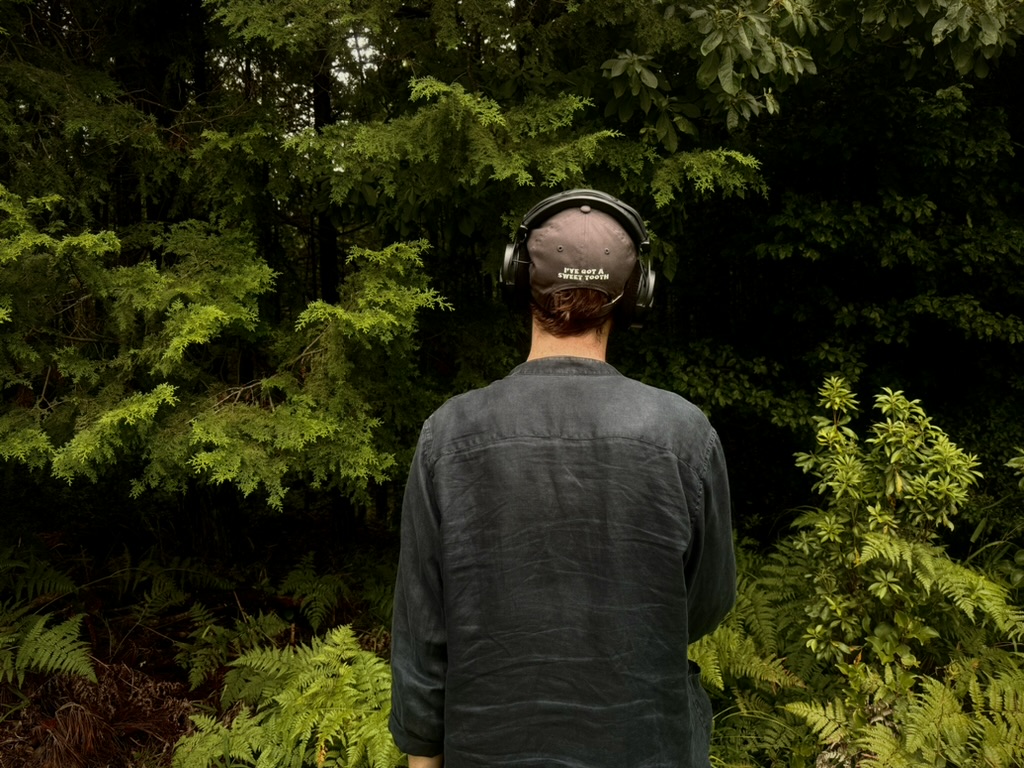Ask any visitor what they remember about Japan, and they’ll often produce a long list of what they saw: cherry blossoms, neon signs, torii gates, and magnificent temples. Maybe even becoming entranced by sunlight filtering through the leaves of a maple tree, or the cleanliness of the cities.
But for me, what I remember most is what I heard.
What drew me in when I moved to Japan was the drone of cicadas, the tick-tick-tick of bicycle wheels spinning down narrow alleys, the crunch of stones underfoot at a shrine, and the slow, resonant chimes of temple bells that seemed to hang in the air. These sounds had a way of capturing me in a different way than any postcard view could. I slowly discovered that Japan, more than any place I had lived before, invites you to explore with your ears.
For over two decades, listening has been a compass. As a composer and sound artist, I’ve worked in Tokyo, Seoul, Taipei, Wellington, London, and beyond—creating soundtracks for films and installations, and releasing albums that grew out of my daily encounters with the world around me.

This interest in sound began back in high school. I found myself at an exhibition by artist Mathew Paul Jinks and was standing in a small room that resembled something of an artist’s studio. But each and every item within the room had a contact microphone attached—a rather small, flat microphone that picks up the vibrations of anything you attach it to. Desk chairs, drawers, typewriters, even the floor became instruments via the use of these contact microphones.
As I walked around the room, wearing wireless headphones, my every move and interaction was amplified a hundredfold. I was suddenly able to tune into sounds that would usually be imperceptible. The subtle creaks of the wooden floor, mingling with the hinged movement of the keys on the typewriter and the scribble of a pencil on paper fascinated me. It was at that moment that I realised how beautiful and rhythmic ‘everyday’ sounds could be if only we paid attention.
Now that I’ve moved to Kyoto, my interest is in uncovering the quieter side of this city that most take for granted: the ‘everyday’ sounds. Since arriving, I’ve been taking people—locals and visitors—on intimate, guided sound walks around the city. Each guest is given a professional field recorder, and we explore using our ears instead of our eyes. Uncovering and recording the sounds that rarely get noticed but are nonetheless beautiful. My goal is to help give people the same experience I had during that exhibition many years ago.

One area particularly overflowing with interesting sounds is around Demachiyanagi Station, where two rivers collide at the delta there. In the summer, you can hear the sharp cry of black kites wheeling overhead, the territorial calls of the Kajika frogs, and the pulse of the rivers as they flow ceaselessly on by. From the station, it’s a quick walk to Demachiyanagi Shotengai (covered shopping street) where snippets of conversation between shopkeepers and customers are captured, along with clanging metal shutters, and the hubbub of a local community—the sounds of an alive Kyoto.
A few steps later, and we’re wandering slowly through Shimogamo Shrine, listening for the insects high in the trees, the crows calling ominously overhead, and the ringing of bells and hakushu (ceremonial claps) of those in prayer.
After each walk concludes, I take the recordings my guests make and edit them into an ‘audio postcard’—a sonic memento of what they found interesting enough to notice and capture.
But of course, not everyone has the opportunity to visit Kyoto and take a sound walk. So, as a way of sharing the beautiful voice of this city with those who can’t be here, I created the Kyoto, in Sound podcast.
Each episode begins as a conversation with a local resident, who shares a story about their favourite sound. I then record their choice and share why it’s so special to them. These conversations are an invitation for people to experience Kyoto more slowly and in a unique way: through the lens of the people who live here and know this city best. My hope is that listeners of these stories will gain a connection to this beautiful city. Something that might just carry over into their own lives.
In a city where every visitor seeks the perfect photograph, I’m learning that Kyoto is often kindest to those who listen instead—and whether it’s the excited voices of schoolchildren crossing a bridge or the sudden silence found when stepping into a temple garden, these are the moments that remind me to do just that.

